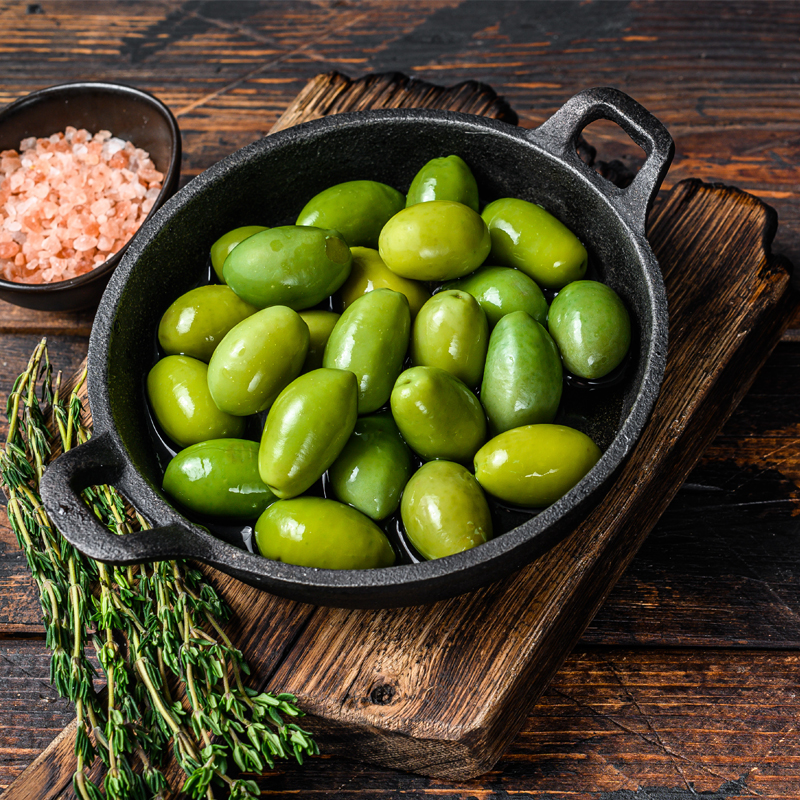
100 gr |
-- |
|
|---|---|---|
| Carbohydrate (gr) | 15.04 |
4928.47 |
| Protein (gr) | 3.59 |
1176.23 |
| Fat (gr) | 12.46 |
4083.43 |
| Fiber (gr) | 1.36 |
445.97 |
| Cholesterol (mg) | 14.64 |
4795.8 |
| Sodium (mg) | 325.27 |
106557.75 |
| Potassium (mg) | 392.16 |
128471.4 |
| Calcium (mg) | 78.15 |
25603.27 |
| Vitamin A (mg) | 46.04 |
15084.01 |
| Vitamin C (mg) | 6.16 |
2019.31 |
| Iron | 0.62 |
203.1 |
Kalamata olives, known for their distinct dark purple hue and rich, tangy flavor, are a popular ingredient in Mediterranean cuisine. While they are a delicious addition to salads, pizzas, and various dishes, their nutritional properties warrant a closer look, especially for individuals mindful of their dietary intake.
Kalamata green olive calories are 145 calories per 100 grams.
1. High in Healthy Fats:
Kalamata olives are naturally high in fats, primarily monounsaturated fats, which are considered heart-healthy. These fats play a crucial role in reducing bad cholesterol (LDL) levels and promoting good cholesterol (HDL). Including these olives in your diet in moderation can support cardiovascular health.
2. Rich in Sodium:
A key consideration when consuming Kalamata olives is their high salt content. During the curing process, olives are often brined to enhance flavor and preserve them. This process results in a significant sodium concentration. For individuals managing hypertension or those on low-sodium diets, choosing low-sodium or unsalted versions is advisable to enjoy the benefits without compromising health.
3. Nutrient Density:
Beyond fats and sodium, Kalamata olives offer small amounts of essential nutrients, such as:
4. Caloric and Oil Equivalent:
Interestingly, just five Kalamata olives contain roughly the same amount of fat as one teaspoon of olive oil. This makes them an excellent alternative for those looking to incorporate healthy fats into their meals without solely relying on oil.
Tips for Incorporation:
Precautions:
Despite their health benefits, portion control is essential to avoid excessive calorie and sodium intake. For individuals with specific dietary needs, consulting a nutritionist or dietitian can help tailor olive consumption to personal health goals.